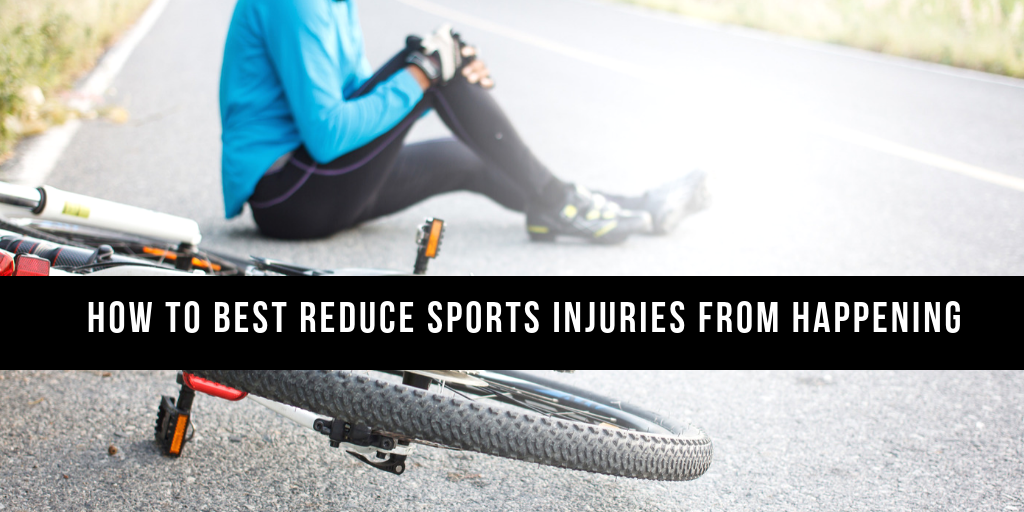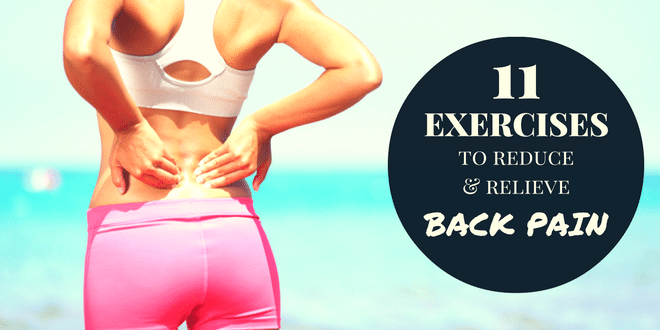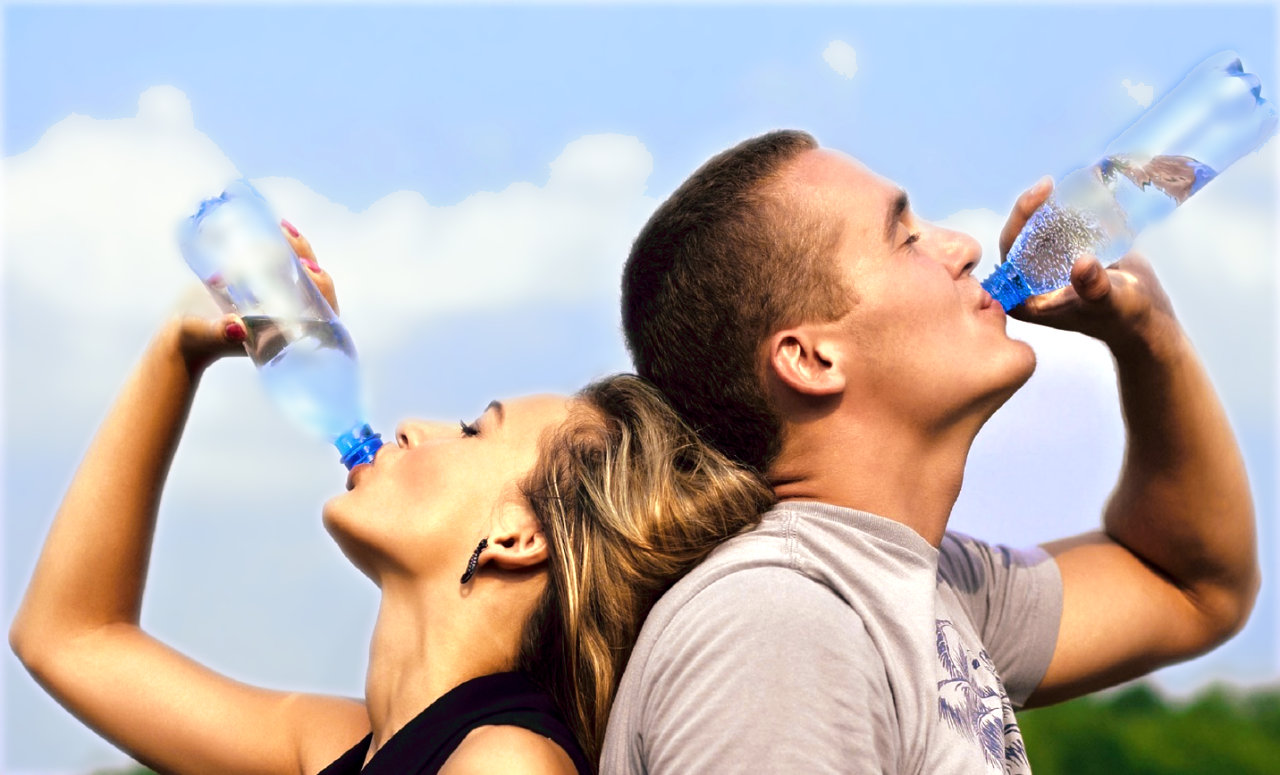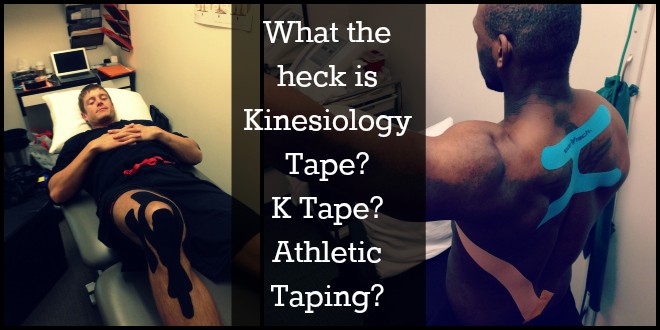How to Best Reduce Sports Injuries from Happening

Did you know that the worst sports-related injuries can lead to chronic, lifetime painful conditions?
Sports injuries can affect anyone. Athletes like baseball players, gymnasts, runners, golfers, hockey players, basketball and football players, and even non-athletes alike are vulnerable.

The common damage caused by sports-related injuries usually affects the tendon, ligament, cartilage, or the muscle. It can be a partial sprain, a strain, or a ligament tear. Bruising and bone fractures are also common. According to WebMD , the seven most common sports injuries are:
Approximately 50 percent of all sports-related injuries can be prevented when proper precautions are observed before practice, a daily workout routine, or an actual sports match.
The following techniques can be implemented to decrease the probability of sports-related injuries:
Beginning with a warm-up is highly recommended at the onset of any workout or sports activity. A quick jog, a little stretching, and some jumping jacks for five to ten minutes prepare the body well.
Warming up prepares the muscle for intense stress. It increases the blood flowing towards the muscles. As the muscles get warmer, they become more flexible.
https://www.youtube.com/watch?v=U-QRgLdLb1Q
The heart rate gradually increases as the body prepares for exercise. Warming up also increases endurance levels.
Damage to the soft tissues, overstretching, muscle tear, and hazardous cardiac stress during workouts are often the injuries resulting from not warming up.
Athletes are highly recommended to be in tip-top shape before engaging in a particular sport. The same is true for fitness aficionados who perform their routine workouts.
Being in the appropriate physical condition can be achieved by taking off-season or pre-participation training. Gently condition the muscles before the physical activities. This leads to the achievement of fitness level right for the engagement in a specific sport.
The rules are designed to keep fitness enthusiasts and athletes safe, decreasing the number of injuries.
Consulting with trainers, coaches, seasoned athletes, and other experts will help ensure the execution of the correct physical exercise and sports techniques.

Since there is always a high risk of getting hurt in each sport or physical exercise, safety is a primary consideration. Hence, plenty of sports require the use of particular protective gear which prevents sports-related injuries especially to the vulnerable parts of the body.
Official rules also dictate that it is a must to wear safety equipment. Athletes should use knee sleeves to protect their legs.
Other examples are shoulder pads, thigh pads, shin pads, and helmets. Always consider proper fitting and sizes.
The high degree of mental focus required during sports matches makes the mind exhausted. Due to the incessant use of the muscles leading to fatigue, the mind would tell the tired body not to perform, putting it in a dangerous situation physically.

Judgment, mental focus, and acuity decrease sports-related injuries from happening. Athletes also need endurance and strength.
Giving the mind and body the sufficient time needed to recover from the use of energy is important. Taking a short break weekly can help athletes recover the energy, metabolic, and oxygen levels used during intense mental and physical exertions. Moreover, they can refocus their minds.
Cooling down sufficiently after an intense sports event or a workout slows down physical movement. These light and gentle physical activities can be in the form of walking or stretching.
While cooling down, a person's breathing and heart rates gradually revert to their normal pace. Waste products are also removed from the muscles and are then replaced with nutrients and oxygen.
Pain is a caveat, indicating that a particular part of one's body is damaged. It is important for a person to be aware of his/her body so he can tell whether the pain he/she is experiencing is related to the physical activity he/she is performing.
He should also understand the disparity between "bad pain" and "good pain." Good pain happens every sports match or workout like the slight discomfort after stretching or lifting.
Bad pain, on the other hand, results from a slight tear on the muscle tissue, vertebrae, and joints due to contraction or extension.

Athletes oftentimes get injured because they do not pay close attention to the pain they had prior to participation in physical activity. Fatigue diminishes the immune system's protective features and heightens the rate of serious injuries.
A person should know his body's physical limits. Preventing overtraining is by stopping once he feels exhausted or his joints and muscles are beginning to hurt.
Perspiration decreases the body fluids. Dehydration ensues which can substantially diminish physical and mental strength. Inadequate hydration can also lead to muscle cramps which worsens the pain.
When exercising and physically active, water is important especially in the humid and sunny weather. Drinking water before, while, and after doing physical activities is important. Always taking water breaks every 30 minutes helps as well.

Before giving one's all in any rigorous workout or sports activity, it is recommended to develop stamina and strength with cardiovascular exercises, stretching, and strength training.
Regular and balanced training with moderate gains in the intensity is the proper way to manage one's workout load.
Sleeplessness undermines athletic performance. People experience extreme muscle fatigue, which is a leading cause of sports-related injuries.
Avoid sleep deprivation as much as possible. Getting adequate sleep boosts physical performance, reducing injury rates and regains lost energy.

Sports and workout activities involve forceful movements. People who do not cultivate proper physical coordination are prone to traumatic injuries.
Hence, it is important to gain proper physical coordination by practicing complex and particular activities or merely doing a wide array of exercises.
Excessive and misguided physical efforts can lead to sports-related injuries. It is advisable to be wise when it comes to one's abilities and the physical activities performed to stay fit.
Keep in mind that it takes substantial time for sports-related injuries to heal. When an athlete or a fitness enthusiast is injured, it is important to be guided by sports medicine experts or trainers who provide athletic health care to athletes or fitness aficionados as they recuperate from injuries.
Serious injuries can be incurred anytime an athlete or a fitness enthusiast is engaged in physical activity. The first and necessary thing to do is to head to the doctor's clinic or a nearby center for orthopedics or sports medicine.

An appointment with sports medicine physicians can help address the injuries sustained as they give the proper diagnosis and the treatment necessary.
Sports-related injuries are unavoidable because these experiences are beyond people's control. However, people can prevent these problems. People should keep in mind the importance of taking the preventive approaches to diminish the rate of injury.
I am a health enthusiast and a DIY Home Improvement in training. I share my tips on maintaining a healthy lifestyle and home projects at Equipment Area. And you can find me on Facebook , Pinterest , and Twitter too!
Sports injuries can affect anyone. Athletes like baseball players, gymnasts, runners, golfers, hockey players, basketball and football players, and even non-athletes alike are vulnerable.

The common damage caused by sports-related injuries usually affects the tendon, ligament, cartilage, or the muscle. It can be a partial sprain, a strain, or a ligament tear. Bruising and bone fractures are also common. According to WebMD , the seven most common sports injuries are:
- Ankle sprain.
- Groin pull.
- Hamstring strain.
- Shin splints.
- Knee injury: ACL tear.
- Knee injury: Patellofemoral syndrome — injury resulting from the repetitive movement of your kneecap against your thigh bone.
- Tennis elbow (epicondylitis)
Approximately 50 percent of all sports-related injuries can be prevented when proper precautions are observed before practice, a daily workout routine, or an actual sports match.
Essential Pro-Active Techniques to Keep Sports-Related Injuries Away
The following techniques can be implemented to decrease the probability of sports-related injuries:
1. Always Warm Up First before Engaging in Physical Activities.
Beginning with a warm-up is highly recommended at the onset of any workout or sports activity. A quick jog, a little stretching, and some jumping jacks for five to ten minutes prepare the body well.
Warming up prepares the muscle for intense stress. It increases the blood flowing towards the muscles. As the muscles get warmer, they become more flexible.
https://www.youtube.com/watch?v=U-QRgLdLb1Q
The heart rate gradually increases as the body prepares for exercise. Warming up also increases endurance levels.
Damage to the soft tissues, overstretching, muscle tear, and hazardous cardiac stress during workouts are often the injuries resulting from not warming up.
2. Take Pre-Participation Training Prior to the Vigorous Activities.
Athletes are highly recommended to be in tip-top shape before engaging in a particular sport. The same is true for fitness aficionados who perform their routine workouts.
Being in the appropriate physical condition can be achieved by taking off-season or pre-participation training. Gently condition the muscles before the physical activities. This leads to the achievement of fitness level right for the engagement in a specific sport.
3. Be Knowledgeable of the Rules in Training and Getting Fit.
The rules are designed to keep fitness enthusiasts and athletes safe, decreasing the number of injuries.
Consulting with trainers, coaches, seasoned athletes, and other experts will help ensure the execution of the correct physical exercise and sports techniques.

4. Always Wear Protective Sports Gear when Playing or Working Out.
Since there is always a high risk of getting hurt in each sport or physical exercise, safety is a primary consideration. Hence, plenty of sports require the use of particular protective gear which prevents sports-related injuries especially to the vulnerable parts of the body.
Official rules also dictate that it is a must to wear safety equipment. Athletes should use knee sleeves to protect their legs.
Other examples are shoulder pads, thigh pads, shin pads, and helmets. Always consider proper fitting and sizes.
5. Take Regular Breaks Each Week.
The high degree of mental focus required during sports matches makes the mind exhausted. Due to the incessant use of the muscles leading to fatigue, the mind would tell the tired body not to perform, putting it in a dangerous situation physically.

Judgment, mental focus, and acuity decrease sports-related injuries from happening. Athletes also need endurance and strength.
Giving the mind and body the sufficient time needed to recover from the use of energy is important. Taking a short break weekly can help athletes recover the energy, metabolic, and oxygen levels used during intense mental and physical exertions. Moreover, they can refocus their minds.
6. Cool Down for Five to Ten Minutes after Playing or Working Out.
Cooling down sufficiently after an intense sports event or a workout slows down physical movement. These light and gentle physical activities can be in the form of walking or stretching.
While cooling down, a person's breathing and heart rates gradually revert to their normal pace. Waste products are also removed from the muscles and are then replaced with nutrients and oxygen.
7. Understand the Pain You Experience in Your Body.
Pain is a caveat, indicating that a particular part of one's body is damaged. It is important for a person to be aware of his/her body so he can tell whether the pain he/she is experiencing is related to the physical activity he/she is performing.
He should also understand the disparity between "bad pain" and "good pain." Good pain happens every sports match or workout like the slight discomfort after stretching or lifting.
Bad pain, on the other hand, results from a slight tear on the muscle tissue, vertebrae, and joints due to contraction or extension.

8. Avoid Engaging in Overtraining to Prevent Injuries.
Athletes oftentimes get injured because they do not pay close attention to the pain they had prior to participation in physical activity. Fatigue diminishes the immune system's protective features and heightens the rate of serious injuries.
A person should know his body's physical limits. Preventing overtraining is by stopping once he feels exhausted or his joints and muscles are beginning to hurt.
9. Always Drink Water to Stay Hydrated while Moving.
Perspiration decreases the body fluids. Dehydration ensues which can substantially diminish physical and mental strength. Inadequate hydration can also lead to muscle cramps which worsens the pain.
When exercising and physically active, water is important especially in the humid and sunny weather. Drinking water before, while, and after doing physical activities is important. Always taking water breaks every 30 minutes helps as well.

10. Manage the Intensity of One's Physical Activities.
Before giving one's all in any rigorous workout or sports activity, it is recommended to develop stamina and strength with cardiovascular exercises, stretching, and strength training.
Regular and balanced training with moderate gains in the intensity is the proper way to manage one's workout load.
11. Always Get a Good Night's Sleep to Recover Used Energy in the Body.
Sleeplessness undermines athletic performance. People experience extreme muscle fatigue, which is a leading cause of sports-related injuries.
Avoid sleep deprivation as much as possible. Getting adequate sleep boosts physical performance, reducing injury rates and regains lost energy.

12. Develop the Body's Proper Physical Coordination.
Sports and workout activities involve forceful movements. People who do not cultivate proper physical coordination are prone to traumatic injuries.
Hence, it is important to gain proper physical coordination by practicing complex and particular activities or merely doing a wide array of exercises.
13. Keep in Mind to Work Out and Play Smart, Not Hard.
Excessive and misguided physical efforts can lead to sports-related injuries. It is advisable to be wise when it comes to one's abilities and the physical activities performed to stay fit.
14. Avoid Physical Exercises when Injured on a Physical Activity.
Keep in mind that it takes substantial time for sports-related injuries to heal. When an athlete or a fitness enthusiast is injured, it is important to be guided by sports medicine experts or trainers who provide athletic health care to athletes or fitness aficionados as they recuperate from injuries.
15. Know What to Do When Sustaining Injuries from Sports.
Serious injuries can be incurred anytime an athlete or a fitness enthusiast is engaged in physical activity. The first and necessary thing to do is to head to the doctor's clinic or a nearby center for orthopedics or sports medicine.

An appointment with sports medicine physicians can help address the injuries sustained as they give the proper diagnosis and the treatment necessary.
Conclusion
Sports-related injuries are unavoidable because these experiences are beyond people's control. However, people can prevent these problems. People should keep in mind the importance of taking the preventive approaches to diminish the rate of injury.
 Author Bio:
Author Bio:
I am a health enthusiast and a DIY Home Improvement in training. I share my tips on maintaining a healthy lifestyle and home projects at Equipment Area. And you can find me on Facebook , Pinterest , and Twitter too!




































































































